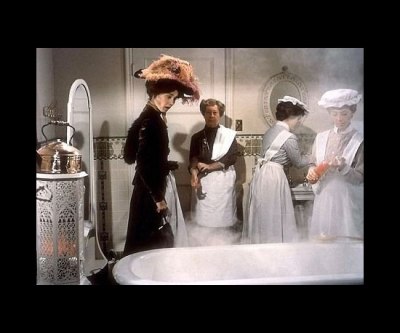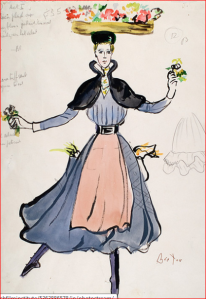
Audrey Hepburn 1953
In 1954, British photographer and creative artist, Cecil Beaton, wrote this article for “Vogue” about a rising film star named Audrey Hepburn. Miss Hepburn was 25 and the newest sensation. She had just won the Academy Award for Best Actress for “Roman Holiday.”
It is always a dramatic moment when the Phoenix rises anew from its ashes. For if “queens have died young and fair,” they are also reborn, appearing in new guises which often create their own terms of appreciation. Even while the pessimists were predicting that no new feminine ideal could emerge from the aftermath of war, an authentic existentialist Galatea was being forged in the person of Miss Audrey Hepburn.
No one can doubt that Audrey Hepburn’s appearance succeeds because it embodies the spirit of today. She had, if you like, her prototypes in France – Damia, Edith Piaf, or Juliet Greco. But it took the rubble of Belgium [sic: Holland] an English accent, and an American success to launch the striking personality that best exemplifies our new Zeitgeist [spirit of the age].

French waif
Nobody ever looked like her before World War II; it is doubtful if anybody ever did, unless it be those wild children of the French Revolution whose stride in the foreground of romantic canvases. Yet we recognize the rightness of this appearance in relation to our historical needs. And the proof is that thousands of imitations have appeared. The woods are full of emaciated young ladies with rat-nibbled hair and moon-pale faces.

Heron’s eyes
What does their paragon really look like? Audrey Hepburn has enormous heron’s eyes and dark eye-brows slanted towards the Far East. Her facial features show character rather than prettiness: the bridge of the nose seems almost too narrow to carry its length, which bares into a globular tip with nostrils startlingly like a duck’s bill. Her mouth is wide, with a cleft under the lower lip too deep for classical beauty, and the delicate chin appears even smaller by contrast with the exaggerated width of her jaw bones. Seen at the full, the outline of her face is perhaps too square; yet she intuitively tilts her head with a restless and perky asymmetry.

Madame Pompadour by Amedeo Modigliani, 1914.
She is like a portrait by Modigliani where the various distortions are not only interesting in themselves but make a completely satisfying composite.
Beneath this child-like head (as compact as a coconut with its cropped hair and wispy monkey-fur fringe) is a long, incredibly slender and straight neck.
A rod-like back continues the vertical line of the nape, and she would appear exaggeratedly tall were it not for her natural grace.

Audrey appears in a Givenchy dress from the 1954 movie, “Sabrina.”
Audrey Hepburn’s stance is a combination of an ultra fashion plate and a ballet dancer. Indeed, she owes a large debt to the ballet for her bearing and abandon in movement, which yet suggest a personal quality, an angular kinship with cranes and storks. She can assume almost acrobatic poses, always maintaining an innate elegance in her incredibly lithe torso, long, flat waist, tapering fingers and endless legs.

Audrey Hepburn was an accomplished ballerina. Undated photo, ca. 1954
With arms akimbo or behind her back, she habitually plants her feet wide apart–one heel dug deep with the toe pointing skywards. And it is more natural for her to squat cross-legged on the floor than to sit in a chair.

Fratellini Poster
Like the natural artist that she is Audrey Hepburn is bold and sure in her effects. There is no lack of vigor in her rejection of the softly pretty. She wears no powder, so that her white skin has a bright sheen. Using a stick of grease paint with a deft stroke, she draws heavy bars of black upon her naturally full brows; and almost in Fratellini fashion, liberally smudges both upper and lower eyelids with black.
To complete the clown boldness, she enlarges her mouth even at the ends, thus making her smile expand to an enormous slice from Sambo’s watermelon. The general public, in its acceptance of such an uncompromisingly stark appearance, has radically forsaken the prettily romantic or pseudo-mysterious heroines of only two decades ago.

1953 Audrey Hepburn grins upon receiving her Oscar for “Roman Holiday.”
In clothing, this ingénue Ichabod wears a “junior miss” version of highwayman coats, clergyman cassocks, or students’ pants, overalls, scarfs.

Audrey Hepburn in loafers and scarf. Undated photo
Yet she is infinitely more soignée than most students, possessing, in fact, an almost Oriental sense of the exquisite.

Audrey Hepburn in the 1954 film, “Sabrina.”

Barnardo’s Boys were orphans
And she is immaculately shod, whether in pumps, sandals, or court shoes. Audrey Hepburn is the gamine, the urchin, the lost Barnardo boy.

Audrey Hepburn from the 1954 film, “Sabrina”
Sometimes she appears to be dangerously fatigued; already, at her lettuce age, there are apt to be shadows under the eyes, while her cheeks seem taut and pallid.
She is a wistful child of a war-chided era, and the shadow thrown across her youth underlines even more its precious evanescence. But if she can reflect sorrow, she seems also to enjoy the happiness life provides for her with such bounty.
It is a rare phenomenon to find a very young girl with such inherent “star quality.” As a result of her enormous success, Audrey Hepburn has already acquired the extra incandescent glow which comes as a result of being acclaimed, admired, and loved. Yet while developing her radiance, she has too much innate candor to take on that gloss of artificiality Hollywood is apt to demand of its queens.

Audrey Hepburn winks in sunlight. undated photo, ca. 1952
Her voice is peculiarly personal. With its unaccustomed rhythm and sing-song cadence on a flat drawl, it has a quality of heartbreak. Though such a voice might easily become mannered, she spends much time in improving its musical range.
In fact, with the passing of every month, Audrey Hepburn increases in dramatic stature. Intelligent and alert, wistful but enthusiastic, frank yet tactful, assured without conceit and tender without sentimentality, she is the most promising theatrical talent to appear since the war. Add to this the remarkable distinction she emanates, and it is not rash to say she also gives every indication of being the most interesting public embodiment of our new feminine ideal.
US Vogue, November 01, 1954
Click here for more on Audrey Hepburn.
Read Full Post »






































